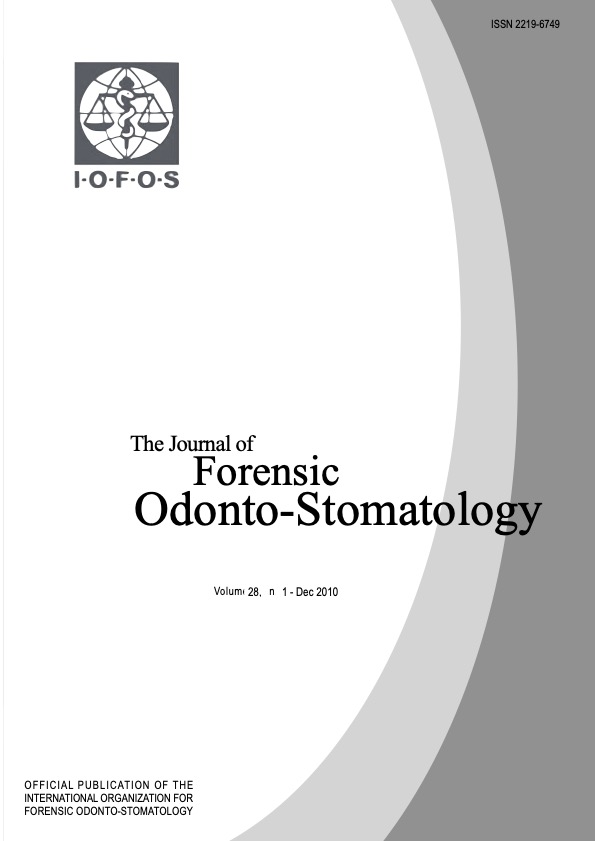Sex discrimination potential of permanent maxillary molar cusp diameters
Abstract
The purpose of the present investigation was to assess the potential usefulness of permanent maxillary molar cusp diameters for sex discrimination of poorly preserved skeletal remains. Cusp diameters were measured from standardized occlusal view photographs in a sample of black South Africans consisting of 130 males and 105 females. Results demonstrated that all cusp dimensions for both first and second maxillary molars exhibited significant sexual dimorphism (p < 0.001). Univariate and multivariate discriminant function equations permitted low to moderate classification accuracy in discriminating sex (58.3%- 73.6%). The allocation accuracies for cusp diameter measurements were as high as, and even surpassed, those observed for conventional crown length and breadth dimensions of the same teeth. The most accurate result (73.6%, with a sex bias of only 0.5%) was obtained when all cusp diameters from both maxillary molars were used concurrently. However, only slightly less accurate results (~70.0%) were achieved when selected dimensions from only one of the molars, or even a single cusp, were utilized. Although not as reliable at predicting sex as other skeletal elements in black South Africans, the derived odontometric standards can be used with highly fragmentary skeletal material, as well as immature remains in which crown formation of the maxillary molars is complete.

